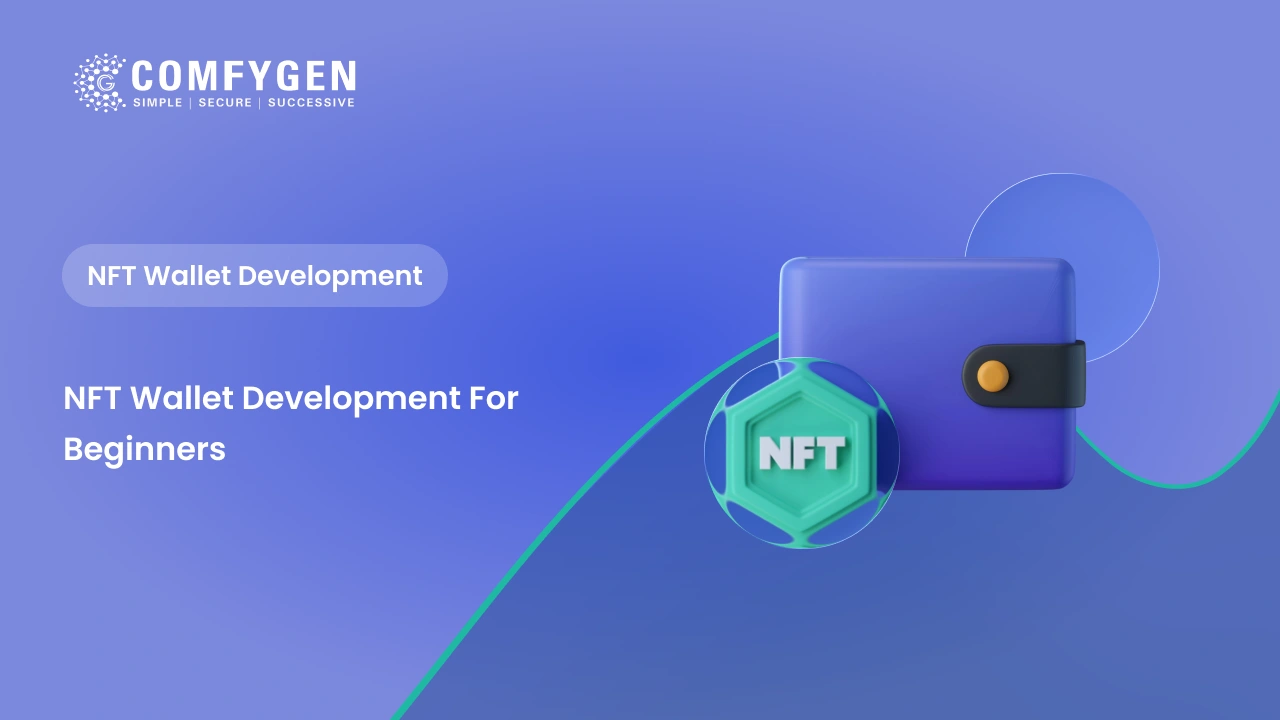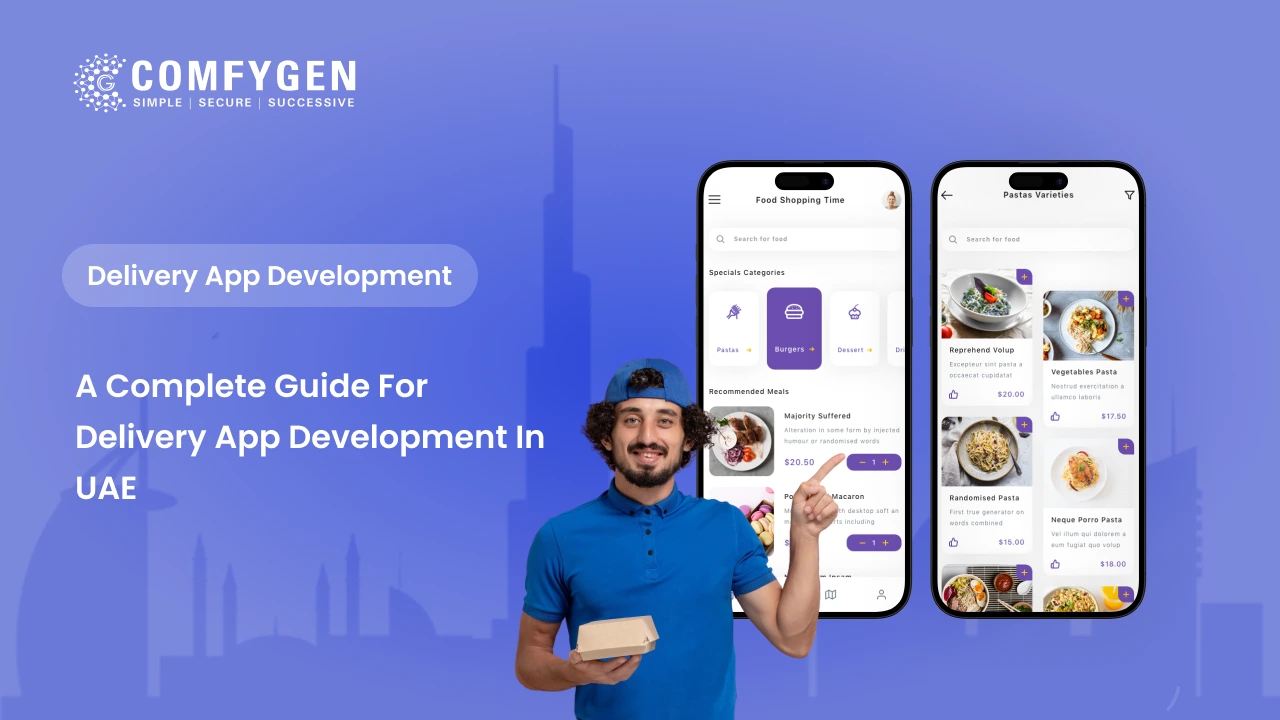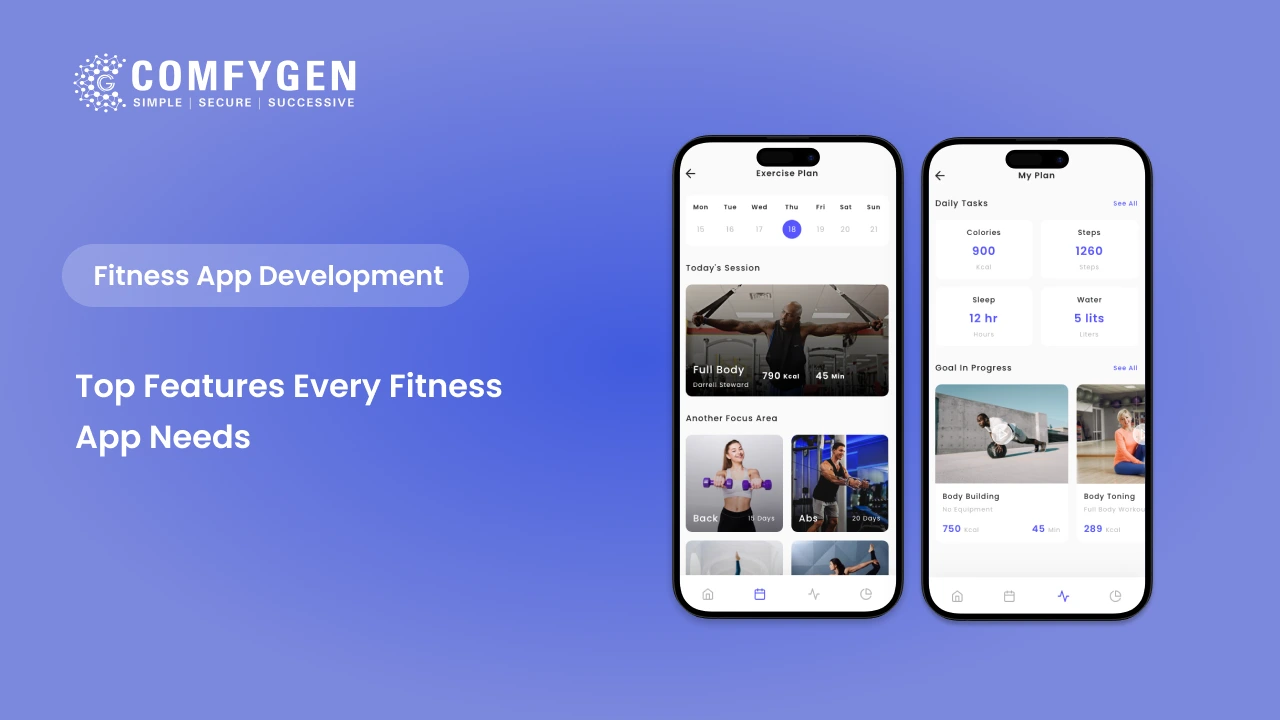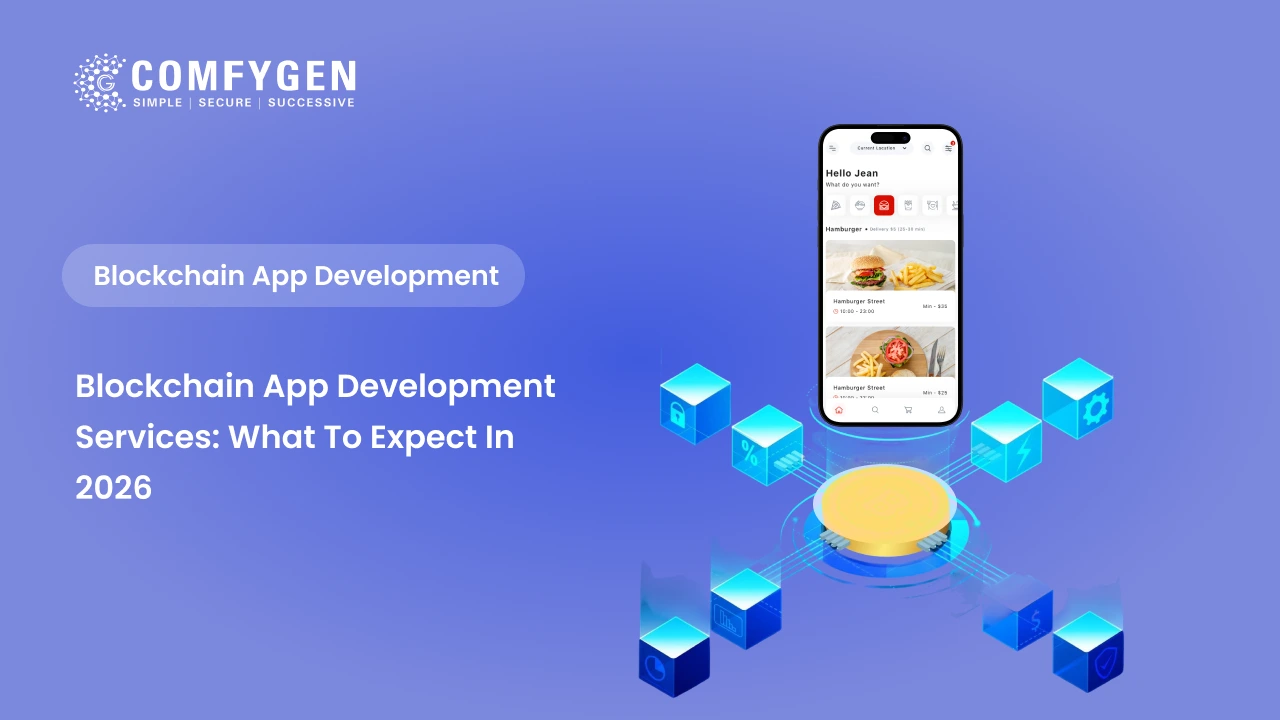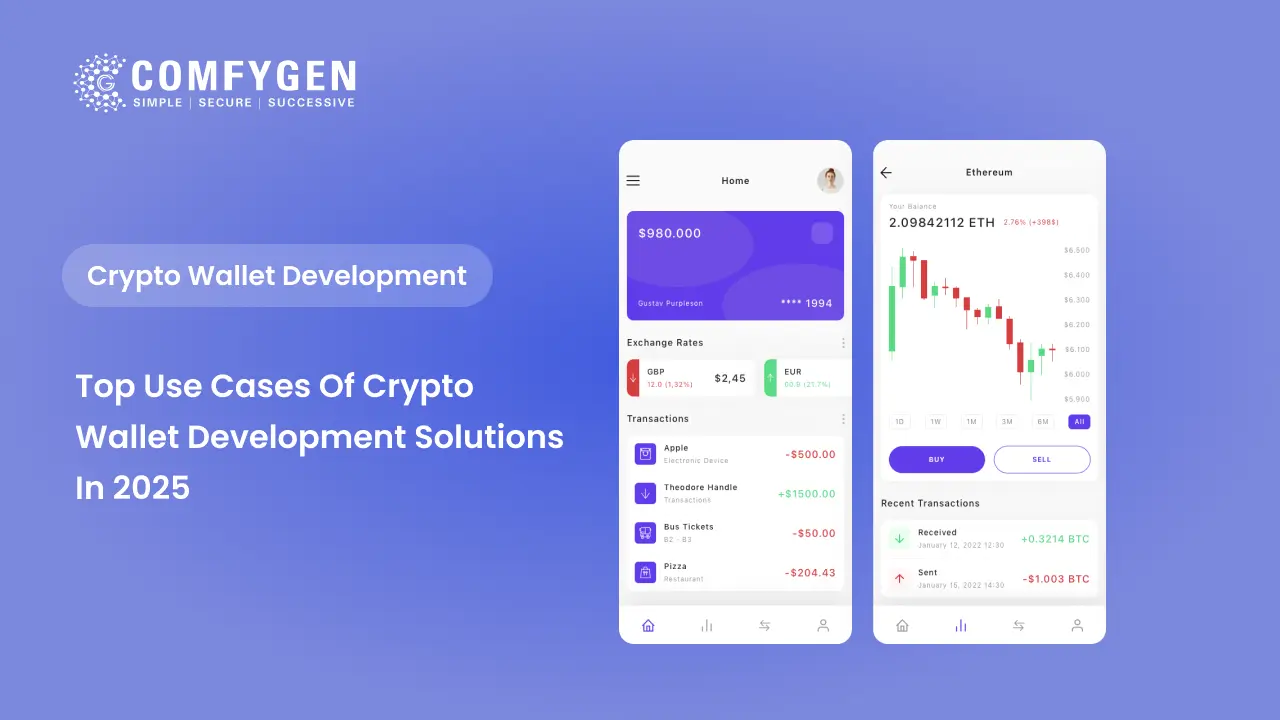Insurance Mobile App Development: Benefits, Features, Process & Cost
As the insurance industry rapidly transitions to a digital-first experience, mobile applications have become a powerful tool for customer engagement, claims processing, and policy management. Users require instant access, fast support, and secure transactions—which is why the demand for insurance mobile app development is rapidly increasing.
In this blog, we’ll discuss why it’s important to invest in an insurance app, the features it should have, the development process, cost factors, and how Comphigen Technologies can support your digital transformation journey.
Top Reasons to Invest in Insurance Mobile App Development
In today’s digital age, mobile app development for insurance companies is no longer a luxury, but a business necessity. Customers expect quick service, transparency, and hassle-free policy management—all of which is possible only through a smart insurance mobile app development. Here, we explain in detail why insurance companies should invest in mobile app development:
- Instant access to policies
Customers can view, update, and manage policies anytime with a mobile app.
- Faster claims processing
Automation helps reduce delays and enhances customer satisfaction.
- Paperless workflows
Apps eliminate paperwork, making underwriting and documentation seamless.
- Reduced operational cost
Chatbots, automation, and self-service tools reduce dependency on physical branches.
- Competitive advantage
In a digital-first world, insurers offering mobile apps stay ahead of the competition.
Key Benefits of Insurance Mobile App Development
Mobile apps have become a game-changer for insurance companies in the digital age. They’re not just a technology upgrade, but a way to transform entire business models. Insurance mobile apps simplify the customer experience, speed up internal processes, and position the company for long-term growth.
Below, we detail the top benefits of insurance mobile app development:
1. Faster & Hassle-Free Claims Processing
Insurance mobile apps simplify the entire claim process by enabling quick document uploads, real-time status tracking, and automated verification, ensuring faster, transparent, and hassle-free claim settlements for users.
2. 24/7 Instant Access to Policies & Services
Insurance mobile apps provide users round-the-clock access to policy details, renewals, payments, and documents, ensuring complete convenience, faster service, and a seamless self-service experience anytime, anywhere.
3. Improved Customer Engagement & Better Retention
Insurance mobile apps boost engagement through personalized alerts, reminders, and policy suggestions, helping insurers build stronger relationships, enhance user experience, and significantly improve customer retention.
4. Reduced Operational Cost with Smart Automation
Insurance mobile apps automate routine tasks like renewals, reminders, and claim verification, reducing manual work, minimizing errors, and significantly lowering overall operational costs for insurers.
5. Enhanced Data Security & Fraud Prevention
Insurance mobile apps use encryption, biometric login, AI-based fraud detection, and secure data storage to protect sensitive user information and prevent unauthorized access, ensuring maximum security.
Different Categories of Insurance Mobile Applications
The insurance industry covers a wide range of customer needs—from health emergencies to vehicle protection, life coverage, travel, and home safety. As a result, insurance mobile applications are developed in different categories, each offering unique features, workflows, and customer experiences. These apps not only simplify policy management but also help insurers streamline claims, deliver personalized services, and maintain stronger customer relationships.
Below are the most widely used and high-demand categories of insurance apps:
1. Health Insurance Apps
Health insurance mobile apps are designed to help customers access medical coverage information instantly and manage health-related services without paperwork.
Key Functions:
- View policy details and coverage limits
- Search hospital networks and cashless facilities
- Submit and track medical claims
- Upload medical bills and documents
- Track wellness programs, steps, diet, and fitness
- Connect with support teams for emergencies
2. Life Insurance Apps
Life insurance apps focus on long-term policy management and financial planning. They help users maintain transparency, track premium payments, and understand the maturity or claim process. With the growing demand for Finance App Development, these insurance platforms also integrate budgeting tools, financial calculators, and smart insights to help users make better financial decisions.
Key Functions:
- View policy term, premium due dates & benefits
- Manage beneficiaries
- Premium payment & auto-reminder notifications
- Calculate returns, maturity value & bonus
- Track surrender value
- Digital KYC and e-signature
3. Motor & Vehicle Insurance Apps
Vehicle insurance apps are highly popular as they simplify accident reporting, renewal reminders, and policy management. With telematics integration, these apps offer even more value.
Key Functions:
- Vehicle policy purchase & renewal
- Accident reporting & uploading incident photos
- Telematics-based driving behavior analysis
- Request roadside assistance
- Track claim status
- Receive reminders for policy expiry & inspection
4. Travel Insurance Apps
Travel insurance apps provide instant protection for trip cancellations, medical emergencies, lost baggage, and other travel-related issues.
Key Functions:
- Instant travel policy purchase
- Emergency medical assistance
- Flight cancellation claims
- Lost passport or baggage support
- Real-time customer support
- Overseas hospital network access
5. Home & Property Insurance Apps
These apps secure property owners by allowing them to manage home insurance policies, file claims for damages, and integrate smart devices for safety monitoring.
Key Functions:
- Coverage details for fire, theft, and disasters
- IoT integration for home monitoring (smoke detectors, sensors, CCTV)
- Claim filing for property damage
- Document submission & claim tracking
- Renewal alerts & policy upgrades
6. Corporate / Employee Insurance Apps
Corporate insurance apps make it easier for companies to manage large-scale employee coverage plans, track policy benefits, and simplify claim processing.
Key Functions:
- Manage group health or life plans
- Digital ID cards for employees
- Coverage details for each employee
- Cashless hospitalization support
- HR & admin dashboards
- Claim assistance & approval tracking
7. Specialized Insurance Apps (Emerging Category)
Many businesses today require niche insurance solutions. Customized apps serve industries like agriculture, pets, equipment, cyber insurance, and more.
Examples Include:
- Pet Insurance Apps – vaccination tracking, vet bills, claims
- Cyber Insurance Apps – data breach alerts, risk scores, claim support
- Agriculture Insurance Apps – crop damage filing, weather alerts
- Gadget/Device Insurance Apps – mobile, laptop, electronics insurance
Essential & Advanced Features of an Insurance App
Modern insurance applications must offer a powerful blend of user-friendly features, automation tools, secure data handling, and advanced technologies to meet the expectations of today’s digital-first customers. Below is a complete breakdown of essential (basic) and advanced (next-generation) features that make an insurance app successful, scalable, and future-ready.
Essential Features of an Insurance App
These are the core features every insurance app must include to provide a smooth customer experience and support basic insurance functions.
1. User Registration & Secure Login
A seamless onboarding experience is crucial. Users can register using email, phone number, or social media.Multi-layer authentication ensures security through OTP, biometric login, or password.
2. User Dashboard
A personalized space where customers can see:
- Active policies
- Upcoming premium dates
- Claims status
- Notifications
- Offers & updates
3. Policy Search, Comparison & Recommendations
Customers can:
- Compare different policies
- Calculate premiums
- View coverage benefits
- Understand terms & exclusions
4. Policy Purchase & Renewal
A simplified buying experience:
- Select policy
- Enter user details
- Upload KYC documents
- Make payment
5. Document Upload & Digital Storage
Customers can upload essential documents like:
- KYC papers
- Claim proofs
- Billing receipts
- Photos/videos (in case of theft or accidents)
6. Claims Filing & Real-Time Tracking
Customers can initiate claims by:
- Uploading documents
- Providing incident details
- Attaching photos/videos for proof
7. Secure Payment Gateway Integration
Supports multiple payment modes:
- UPI
- Debit/credit cards
- Net banking
- Wallets
8. Customer Support & In-App Chat
Apps include live chat, email support, or chatbot assistance to resolve policy or claim-related queries. This reduces call-center load and improves the customer experience.
9. Push Notifications & Alerts
Timely updates help users stay informed about:
- Premium due dates
- Policy renewal reminders
- Claim progress
- Personalized offers
- Important policy announcements
10. Agent/Advisor Module
Insurance agents can manage:
- Client list
- Policy sales
- Commission reports
- Document submission
- Customer follow-ups
Step-by-Step Process for Developing an Insurance Application
Developing a high-quality, secure, and scalable insurance mobile app requires a systematic approach. The process involves strategic planning, user-focused design, advanced technology integration, and strict security measures. Below is a complete breakdown of each stage involved in the insurance mobile banking app development lifecycle:
1. Requirement Gathering & Business Analysis
The first step focuses on understanding your business goals, insurance services, and target audience. This stage ensures the app aligns perfectly with your insurance workflows.
2. Creating User Personas & App Flow Mapping
To deliver an exceptional experience, developers must understand how different users will interact with the app.
3. UI/UX Design
In this phase, designers build the app’s interface and user experience.
4. Frontend & Backend Development
Once the design is finalized, developers begin building the actual app.
- Frontend Development (User-facing screens)
- Backend Development (Server-side logic)
5. API Integration & Third-Party Services
Insurance apps require multiple integrations for smooth operation.
6. Security Implementation & Compliance
Insurance apps handle highly sensitive personal and financial data. Strict security standards must be implemented to prevent fraud and data breaches.
7. Testing & Quality Assurance (QA)
Before launch, the entire app undergoes comprehensive testing to ensure stability and reliability.
8. Deployment & Launch
After successful testing, the app is prepared for launch.
9. Post-Launch Support, Updates & Maintenance
Once the app is live, continuous improvement becomes essential.
10. Scaling for Future Growth
As your user base grows, your app must be ready for higher traffic and new features.
Technology Stack Required for Building an Insurance Mobile App
Building a secure, scalable, and user-friendly insurance mobile application requires a strong and modern technology stack. Since insurance apps handle sensitive user data, financial transactions, KYC details, policy documents, and claims, the tech stack must focus equally on performance, security, scalability, and smooth user experience.
Below is an in-depth breakdown of the essential components of a robust technology stack for insurance app development.
1. Frontend (Mobile App Interface Technologies)
This is the layer that users interact with. It must be fast, clean, responsive, and easy to navigate.
a) Cross-Platform Frameworks
Choose if you want to build a single app for both Android and iOS with lower cost and faster development.
- Flutter
Offers near-native performance, beautiful UI, and a faster development cycle.
- React Native
Uses JavaScript, supports reusable components, and integrates well with third-party APIs.
b) Native App Development (High Security & Performance)
Choose this if your app requires heavy processing or advanced security.
- Swift for iOS
- Kotlin for Android
2. Backend Development Technologies (Core Logic & Server-Side Operations)
The backend is the “brain” of the insurance application. It processes data, handles authentication, manages policies, computes insurance amounts, and ensures smooth workflow.
Common Backend Languages:
- Node.js- Fast, scalable, event-driven—best for real-time features like claim status updates and notifications.
- Python (Django / Flask)- Excellent for building AI/ML-based features such as risk assessment and fraud detection.
- Java / Spring Boot- Highly secure and stable—ideal for enterprise-level insurance systems.
- .NET Core- Great for large insurance companies requiring high stability and Microsoft ecosystem integration.
3. Database Technologies (Data Storage & Policy Records)
Insurance apps store massive amounts of sensitive information: user profiles, documents, policy details, claims, premium history, etc.
Popular Databases:
- PostgreSQL- Advanced security & supports complex queries.
- MySQL- Reliable and widely used for structured data.
- MongoDB (NoSQL)– Best for apps requiring scalability or handling large, unstructured data (documents, chat logs, images).
- Redis- Used for caching to increase app speed.
4. Cloud Infrastructure (Hosting & Scalability)
Cloud platforms ensure your insurance app can scale without downtime, especially during peak usage (like claim seasons).
Top Cloud Providers:
- AWS (Amazon Web Services) –Offers strong security, scalability, and AI tools.
- Google Cloud Platform (GCP)- Great for analytics and machine learning.
- Microsoft Azure- Ideal for enterprise-grade insurance apps, especially if backend is built on .NET.
Cloud is essential because:
- It reduces infrastructure cost
- Supports high data security
- Enables auto-scaling
- Ensures 99.9% uptime
5. APIs & Integrations (Extending App Functionality)
Insurance apps rely heavily on third-party integrations and internal systems.
Essential APIs include:
- Payment Gateway APIs- To collect premiums (Razorpay, PayU, Stripe).
- KYC/Identity Verification APIs- Aadhaar-based eKYC, PAN verification.
- CRM Integration APIs- For managing leads, customer interactions, and agent activities.
- Telematics APIs (for motor insurance)- Collects vehicle driving behavior data.
- Chatbot APIs- For automated customer support (Dialogflow, Botpress).
- Insurance Data & Underwriting APIs- Used to calculate premiums, risk scores, and coverages.
6. Security Technologies (Most Critical Component)
Because insurance apps store sensitive data, security must be top priority.
Important Security Tools & Techniques:
- SSL/TLS Encryption
Protects data in transit between app and server. - AES-256 Encryption
Secures stored data. - OAuth 2.0 / JWT Authentication
Ensures safe login and authorization. - Biometric Authentication (Fingerprint/Face ID)
Adds an extra security layer. - Role-Based Access Control (RBAC)
Limits access for agents, admins, customers as needed. - Fraud Detection Algorithms (AI/ML)
Helps detect suspicious claims and reduce financial losses.
7. DevOps & CI/CD Tools (Fast Development and Deployment)
These tools ensure continuous testing, fast updates, and stable releases.
- Docker
For containerized environments.
- Kubernetes
For automatic app scaling and smooth performance.
- Jenkins / GitHub Actions
For continuous integration and deployment pipelines.
- Terraform / Ansible
For infrastructure automation.
8. Analytics & Reporting Tools
Insurance companies rely heavily on data-driven decisions.
Common Tools:
- Google Analytics / Firebase Analytics
Tracks user behavior.
- Power BI / Tableau
Generates business insights and dashboards.
- Mixpanel
Helps understand in-app user actions.
9. AI, ML & Automation Tools (Advanced Features)
These technologies modernize insurance apps and improve operations.
Capabilities include:
- AI-based underwriting
- Predictive analytics for risk assessment
- Chatbots & virtual assistants
- Fraud detection & anomaly detection
- Automated claims processing
Core AI/ML Tools:
- TensorFlow
- Scikit-learn
- OpenCV
- PyTorch
Major Cost-Determining Factors in Insurance App Development
The cost of insurance mobile app development depends on multiple technical, functional, and business-level factors. Since insurance apps require high-end security, compliance, and data-driven features, the overall development budget varies from project to project. Below are the major elements that significantly influence the final pricing.
1. App Complexity and Feature Set
The biggest factor affecting cost is the number of features and complexity level of the app.
Basic App Features (Lowest Cost Range):
- User registration
- Policy browsing
- Policy purchase
- Document upload
- Basic claims submission
- Payment integration
Mid-Level Features:
- Claims tracking
- Premium calculator
- In-app chat support
- Notifications & reminders
- Agent panel
Advanced Features (Highest Cost Range):
- Ai-based risk assessment
- Telematics integration (vehicle behavior tracking)
- OCR scanning for documents
- Blockchain-based policy security
- IoT-based home/health monitoring
- Predictive analytics
- Chatbots for automated support
More features = Higher development cost.
2. Number of User Panels
Insurance apps often require multiple dashboards and access levels:
- Customer App
- Insurance Agent Panel
- Admin Panel
- Corporate/Employer Panel (if required)
How Our Expertise Supports Your Insurance App Development Journey
3. UI/UX Design Requirements
High-quality design directly impacts user experience.
Cost varies based on:
- The complexity of screens
- Micro animations
- Custom graphics
- Icon sets and dashboards
- Onboarding experience
4. Technology Stack (Frontend + Backend)
Your choice of technology influences both cost and development speed.
Factors that affect cost:
- Native development (Swift/Kotlin) – more expensive
- Cross-platform development (Flutter/React Native) – cost-effective
- Complex server-side technologies (Node.js, Python, Java)
- Database selection (MongoDB, PostgreSQL, MySQL)
- Cloud infrastructure (AWS, Azure, GCP)
5. Third-Party Integrations & APIs
Insurance apps rely heavily on API integrations:
Common APIs include:
- Payment gateways
- KYC & identity verification (Aadhaar, PAN, OTP verification)
- CRM system integration
- Insurance data APIs
- Telematics & IoT APIs
- Chatbot APIs
- Document scanning (OCR)
6. Security Measures & Compliance Requirements
Insurance apps require advanced security, which impacts overall pricing.
Essential security features:
- End-to-end encryption
- Two-factor authentication
- Token-based access (OAuth 2.0, JWT)
- Fraud detection using AI
- Secure cloud hosting
- Compliance with IRDAI & data protection laws
7. Backend Architecture & Infrastructure
Apps supporting large user bases or real-time processing need a strong backend.
Cost-driven infrastructure elements:
- Server hosting
- Cloud storage
- Load balancing
- API gateways
- Monitoring tools
8. App Development Team Size & Expertise
Pricing varies based on the experience and structure of the development team:
Team roles include:
- Project Manager
- Mobile Developers
- Backend Developer
- UI/UX Designer
- QA Tester
- DevOps Engineer
- Security Specialist
9. Target Platforms (Android, iOS, or Both)
- Developing for one platform costs less.
- Building for both Android and iOS doubles the design, development, and testing efforts.
10. Testing and Quality Assurance
Insurance apps must be tested thoroughly to avoid bugs in:
- Claim submission
- Policy documents
- Payment processing
- Security modules
- API integrations
More extensive testing = Higher QA costs.
11. Post-Launch Maintenance & Updates
After launch, the app requires ongoing expenses:
- Bug fixes
- Feature upgrades
- Server maintenance
- App updates for new operating systems
- Performance improvements
Conclusion
Insurance mobile app development is transforming how insurers connect with customers, manage policies, and process claims. With rising demand for fast, secure, and user-friendly digital services, mobile apps help companies streamline operations and deliver a superior customer experience. The right features, technology stack, and development strategy can significantly boost efficiency and data security while reducing operational costs. Partnering with an expert company like Comfygen Technologies ensures a high-quality, future-ready insurance app tailored to your business goals. In today’s competitive market, investing in a powerful insurance mobile app is a smart step toward growth, innovation, and long-term success.

Mr. Saddam Husen, (CTO)
Mr. Saddam Husen, CTO at Comfygen, is a renowned Blockchain expert and IT consultant with extensive experience in blockchain development, crypto wallets, DeFi, ICOs, and smart contracts. Passionate about digital transformation, he helps businesses harness blockchain technology’s potential, driving innovation and enhancing IT infrastructure for global success.




